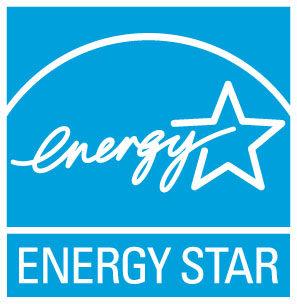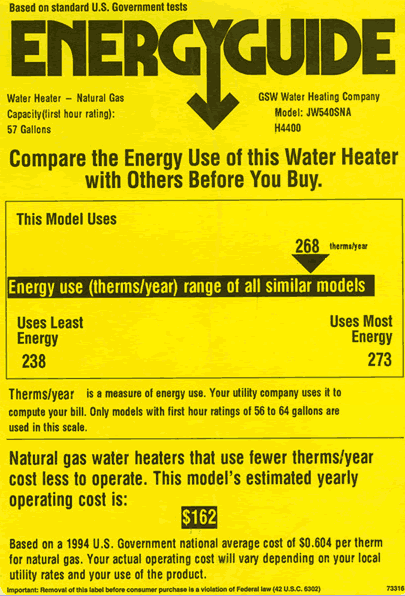One way the government can set prescriptive boundaries on energy consumption and signal development of more efficient technologies and products is through the adoption of efficiency standards and labeling. By establishing minimum requirements for a variety of energy usages (from utility companies to the DVD player you choose), they are driving the market to produce more efficient products. Labeling products empowers consumers to make more informed decisions about how the products they buy will impact their own electricity bills (and our climate!). Let's take a look at some of the efforts across the country to establish standards and provide labeling guidelines. Note that this list is far from exhaustive, and in addition to finding more examples domestically, a simple Google search will reveal countless international efforts underway to achieve similar results. The Collaborative Labeling and Appliance Standards Program (CLASP) does research on energy standards and labeling programs in the United States and elsewhere, and is worth checking out in this regard.
Energy Efficiency Resource Standards (EERS):
An EERS is similar to a Renewable Portfolio Standard in that it dictates a certain percentage by which a utility must reduce its energy use over time. These standards can be implemented in different ways, including through market-based systems of trading or the option to buy out and just purchase credits. Generally, the initial targets in the program are low and increase over time, allowing maximum flexibility for meeting goals. An EERS is an attractive approach to achieving real energy savings, because, instead of emphasizing the costs of the program, it focuses on the energy savings (and therefore avoided expenses). Many states have already implemented EERS programs, and several others have standards in development.
While there is no federal EERS in place yet (several bills have been drafted, though), the patchwork efforts of states across the country represent a substantial portion of national energy use. If a federal EERS were to be enacted, states could continue to operate their state-level EERS programs in conjunction with the federal standard, and if state targets were higher, they could continue to work toward those goals.
Check out the American Council for an Energy-Efficient Economy site to learn more about initiatives in every state (also mentioned on previous page in regard to state conservation policies). The website also provides functionality for comparing state efforts against each other.
Labeling Products with Energy Efficiency Information:
Labeling products so that consumers can make informed choices about how the purchases they make will impact their utility bills and the environment is just one way to implement smart energy policies. Probably the most widely recognized labeling effort is that of ENERGY STAR.
There are two types of labeling utilized by the ENERGY STAR program with which you should be familiar.

The first is an endorsement label, and that's just this ENERGY STAR logo (at right) you have likely seen on a wide range of products. The label indicates to the consumer that this product is certified by the ENERGY STAR program. In order to earn the label, products must meet standards established by the EPA and to an extent, DoE. In addition to providing energy savings, ENERGY STAR-qualified products must also provide comparable performance and features consumers expect out of that category of product.
Visit the ENERGY STAR website to learn more about how a product (or building, plant, or new home) can earn this label.
The second type of label you should know about is a comparative label. As the name suggests, this type of labeling allows consumers to evaluate the energy efficiency of multiple products before selecting one. This familiar yellow labeling scheme contains information on kWh/year used for this model of product vs other similar models, and also offers consumers an estimate of yearly operating costs for the product. This label is associated primarily with home appliances. The information printed on these yellow labels is based on standardized testing procedures developed and prescribed by the DOE. All ENERGY STAR qualified appliances are required to also carry this label.
Want to dig into policy implementation weeds in your spare time? Well, you are in luck! Here is a "proposed rule" by the Federal Trade Commission to update energy labeling regulations. The FTC is considering updating their "rule" (basically, their interpretation of how to implement the law) for CFR part 305, which is a law passed in 1987 that requires energy and water efficiency labeling. They are the agency that is responsible for the implementation of this law, which is why it is their concern. Per federal policy, they must provide a comment period during which anyone can submit a comment in support or otherwise to the proposed changes to the rule. The FTC is required by law to consider all substantive comments before they make their final ruling. It actually makes for some pretty interesting reading because they are proposing new appliances that must be labeled and changing labeling requirements. It is interesting (well, to some of us, I suppose) who decides what goes on those labels and how. This is the sausage being made, folks, and how policy is implemented!

